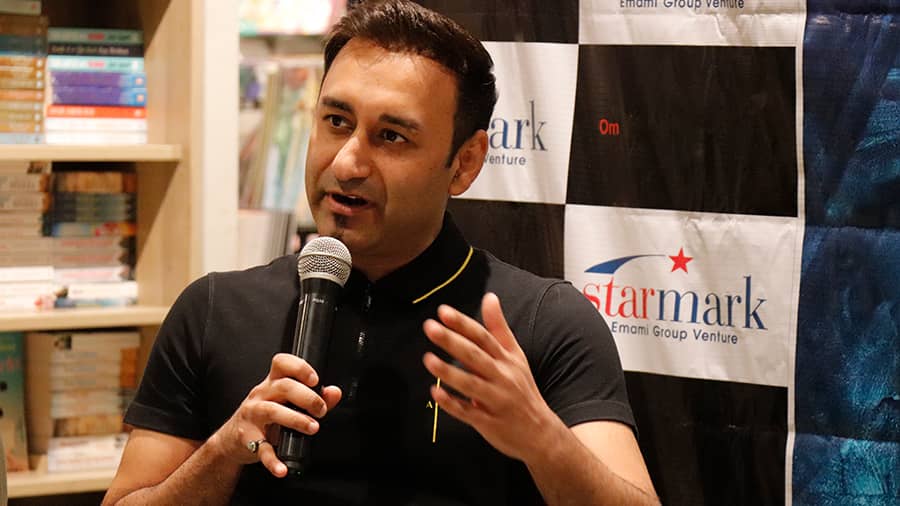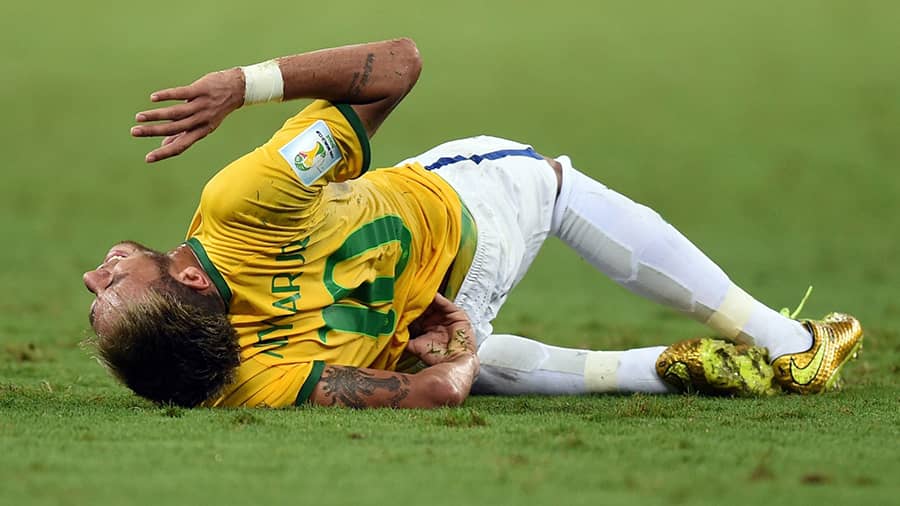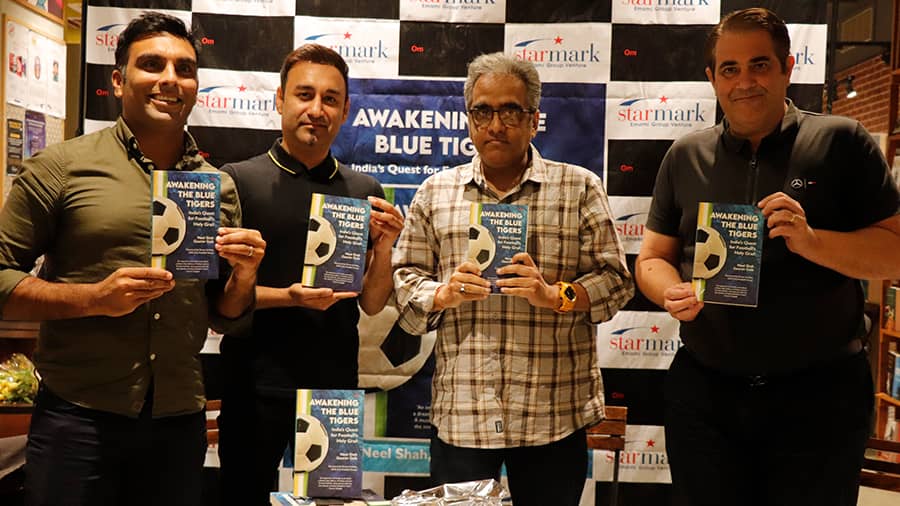In less than a month’s time, Qatar will become the cynosure of world football, as the latest edition of the FIFA World Cup kicks off, with 32 teams vying for glory. But just like every single World Cup before this, India will not be among the nations competing, with 1.4 billion going unrepresented once more at the most viewed sporting competition on the planet. How can this change? How can India make it to a World Cup for the first time in history? Awakening the Blue Tigers, co-authored by Neel Shah, a sports management professional and educator, and Gaurav Gala, a veteran broadcast journalist, attempts an answer.
Published by Om Books International, Awakening the Blue Tigers surveys the contemporary scene in Indian football and offers a step-by-step guide into how India can edge their way to footballing dreamland. The Kolkata launch of the book took place on October 28 at Starmark, South City Mall, in the presence of the authors as well as Shantanu Ray Chaudhuri, the editor-in-chief of Om Books International, and Paul Masefield, a football pundit and commentator. My Kolkata was there to listen in as the panel shared their insights into Indian football and a possible roadmap for transformation.
‘Missing out on the 1950 FIFA World Cup set us back by almost four decades’

Neel Shah shed light on how absence from the 1950 World Cup cost India dear in the decades to follow Subham Behera
The conversation for the evening, moderated by Ray Chaudhuri, began by revealing the genesis of the book — a simple query by his teenage son Shashwata about the need for a book explaining India’s absence from this year’s World Cup. Gala was the first to be contacted and once Shah jumped on board, it took just one conversation to finalise the book, which was written within six months, even though the two authors had only met for 20 minutes before and during that phase.
“Having grown up in the US, I’ve often thought to myself that if the US can make it to the World Cup, why not India? I don’t think we can quite imagine the enthusiasm that would be unleashed if and when India does that. When I realised that Gaurav had the same ideas, I knew we had to write the book together,” said Shah, who described the collaborative writing process as ‘effortless’.
He went on to explain how not participating in the 1950 World Cup in Brazil — India had been invited but the AIFF chose to prioritise the 1951 Asian Games and the 1952 Helsinki Olympics — was the sensible decision in the short-term, since the World Cup was yet to become an event of international magnitude and recognition. However, in the long run, it ruined FIFA’s relationship with India and “set us back by almost four decades, since we were prevented from qualifying till 1986. This meant that some of our best players never got to compete at the highest level and we missed out on knowing what it is to play in a World Cup for generations.”
‘Qualifying for a FIFA World Cup as impressive as winning a cricket World Cup’

Gaurav Gala painted a picture of football’s possible growth by paralleling it with the cricket revolution in India catalysed by the 1983 World Cup win Subham Behera
Gala took over from Shah to explain the role of another World Cup in India’s football story — the one that India won in 1983. “Winning the cricket World Cup in ’83 in England was a huge turning point for the sport in India. Four years later, we hosted the World Cup in India, which gave it tremendous visibility among the Indian audience. Following the opening up of the Indian economy, the BCCI realised that they had been sitting on an enormous cash cow and sold the rights to broadcast Indian cricket to a private company. That helped inject a lot of money into cricket and made it commercially viable for players besides leading to the development of better infrastructure. Can the same happen for football? Yes, and simply qualifying for the football World Cup may do the trick, an achievement that may be just as impressive as winning cricket’s equivalent tournament back in the day.”Asked by Ray Chaudhuri as to how and when India can make it to the World Cup, Masefield said that the expansion of the tournament to include 48 teams from 2026 gives India a great chance. “FIFA is definitely interested in doing all they can to get the likes of India and China into the World Cup. But we also have to see how the extra slots for the World Cup are allotted. For me, it makes no sense to give five-and-a-half slots to South America, who only have 10 teams. I’d much rather the Asian teams get more slots because there are so many more contenders. With the growth of the Indian Super League (ISL), Indian football now has a far bigger talent pool to choose from. I fully expect India to reach the World Cup soon. If not in 2026, then probably in 2030.”
When Brazil fans in Kerala tried to treat Neymar

Neymar did not recover in time for Brazil’s World Cup exit in 2014, but it was not for the lack of trying from some passionate fans in Kerala FIFA
The discussion gradually segued to talk about football fandom in India and how that creates a thriving culture for the beautiful game in the country. Shah and Gala exchanged stories of a tea seller in North 24-Parganas offering free tea whenever Argentina play (“he considers Lionel Messi to be his son!”) and how Brazil fans in Kerala had reached out to the Brazilian FA through Kerala’s health ministry to suggest Ayurvedic treatment for Neymar, when the Brazilian superstar suffered a terrible injury in the middle of the 2014 World Cup. “There’s a certain tribalism among Indian football fans that makes them care about the clubs they support and the nations they root for, even if they may be hundreds and thousands of miles away from where those teams are based,” observed Shah and Gala, both diehard Liverpool fans. “At the same time, just because you support Real Madrid or Chelsea or Manchester United doesn’t mean you can’t come out and support your local team. I believe that fan allegiances can be multiple and complement each other,” added Masefield.
The evening concluded with a couple of questions from the audience, including one about when India could potentially host the World Cup. Taking up the question, Shah said: “We did an excellent job of hosting the FIFA U-17 World Cup in 2017, but hosting a senior World Cup is a different ball game altogether. Even though there’s interest from FIFA in awarding more tournaments to India, given the investment and the sheer resources required, it may not be wise to host the World Cup anytime soon.” Gala supplemented the argument: “We should ideally host a World Cup after having played in one or two. That will ensure that we’ll be able to play at a standard that’s adequate for such a prestigious tournament.”


